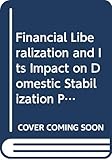Financial Liberalization and Its Impact on Domestic Stabilization Policies : Singapore and Malaysia / Emil-Maria Claassen.
Material type: TextPublisher: Singapore : ISEAS Publishing, [1992]Copyright date: ©1992Description: 1 online resource (36 p.)Content type:
TextPublisher: Singapore : ISEAS Publishing, [1992]Copyright date: ©1992Description: 1 online resource (36 p.)Content type: - 9789813016033
- 9789814414289
- online - DeGruyter
- Issued also in print.
| Item type | Current library | Call number | URL | Status | Notes | Barcode | |
|---|---|---|---|---|---|---|---|
 eBook
eBook
|
Biblioteca "Angelicum" Pont. Univ. S.Tommaso d'Aquino Nuvola online | online - DeGruyter (Browse shelf(Opens below)) | Online access | Not for loan (Accesso limitato) | Accesso per gli utenti autorizzati / Access for authorized users | (dgr)9789814414289 |
Frontmatter -- Table of Contents -- List of Figures -- Acknowledgements -- 1. Introduction: Real Appreciation as an Outcome of Financial Liberalization -- 2. Comparative Country Analysis -- 3. Singapore's Dilemma of Financial versus Commercial Priorities -- 4. Malaysia's Semi-Dutch Disease -- 5. Conclusion: Similarities and Differences of the Singaporean and Malaysian Experiment -- Notes -- References
restricted access online access with authorization star
http://purl.org/coar/access_right/c_16ec
Full convertibility on the capital account brings with it the danger of real appreciation of the domestic currency as a consequence of additonal net capital imports. The real appreciation, in its turn, disfavours exports. At the end of the 1970s, Singapore and Malaysia had liberalized almost completely their international capital flows. Both countries experienced approximately the same growth and inflation rate. During the first hald of the 1980s, both currencies went through a considerable appreciation of their real efective exchange rates, since at that particular period both pegged their currencies to the U.S. dollar. In 1985, both were "an island of recession" when industrialized Asian and other developing countries passed through an economic boom. The recession was an outcome of their domestic stabilization policies. Singapore, which developed towards an international financial centre, had to assure the "quality" of its domestic currency in order to overcome the regualtory and fiscal advantages of Asian dollar deposits. The Singapore dollar became misaligned since financial priorities overruled commercial considerations. In contrast, Malaysia's real effective appreciation was the outcome of its huge government expenditures since it fell into the trap of the Dutch disease after the commodity price boom of 1979/80.
Issued also in print.
Mode of access: Internet via World Wide Web.
In English.
Description based on online resource; title from PDF title page (publisher's Web site, viewed 30. Aug 2021)


